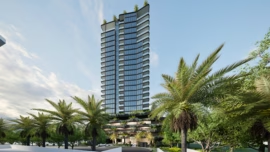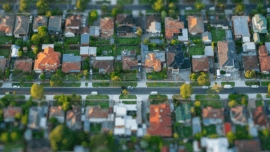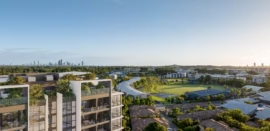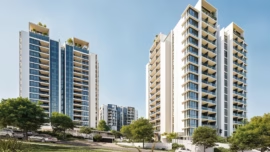
Sustainable Building
On average, Australian families spend 90% of their time indoors, with two thirds of this at home. At Homecorp sustainable building is a key consideration in developing inspiring communities of the future where people belong.
Where we live, both the structure and the community it is in, will always have a huge impact on our lives.
Why are our homes so important?
Our home is our castle right? Our home, both the location and the home itself, influence almost every aspect of our lives.
With our home being one of the most important purchases we will ever make, it’s important that it’s a good financial investment, and also a comfortable and healthy home too.
What’s more, not only do our homes need to be comfortable and work for us today, they also need to be flexible, and respond to the needs of tomorrow.
Most Australians use the regulatory environment to ensure they have access to quality housing that is affordable and can respond to a changing world. Regulation alone is not delivering these outcomes fast enough, we must do better.
Our vision for better homes, today and tomorrow
Homecorp’s vision is to create healthy, resilient and positive places for people. Buildings have an enormous impact on our health and well-being, and our planet.
We believe that everyone should have access to healthy buildings that are also good for our environment.
Efficient homes powered by renewables also bring an additional benefit, they are designed to emit zero emissions during operations. Importantly, we believe that a home that delivers these outcomes should be affordable and save money.

Creating well-insulated, energy efficient homes that are also healthy and comfortable for the occupants is a must.
It is critical to build in resilience to allow for our changing climate and lifestyles to better serve not only those first owners, and also those that follow.
There are eight Australian climate zones defined by the National Construction Code (NCC) of Australia and published by the Australian Building Codes Board.
Understanding Your Climate Zone
Being across which of the eight climate zones you are in is important to ensure that your home is built to suit your local conditions. The NCC has different building code requirements for each climate zone. Within each zone are many regional subzones, determined by local geographic features such as wind patterns and height above sea level. These local conditions should also be considered when designing your home.
Climate zones in the NCC reflect current climate conditions. When buying, building, or renovating a home, it is important to consider both the current and predicted future climate of your region. Careful planning and responsible building practices can ensure your home will remain energy- and water-efficient and comfortable for you to live in for years to come.

Balancing the needs of today and tomorrow
Healthy
Comfortable and built with products that are better for you
Resilient
Climate ready, able to respond to changing needs
Positive
Efficient and powered by renewables, also known as net zero energy
The 7 Principles of Sustainable Building
Increasingly, the 7 principles of sustainable construction are being used as a framework for the built environment, offering guidance on how achieve greener construction by reducing the industry’s overall carbon footprint.
These Sustainable Construction Principals are:
- Sustainable Design
- Durability
- Energy Efficiency
- Waste Reduction
- Indoor Air Quality
- Water Conservation
- Sustainable Building Materials

Sustainable Design
Sustainable Design is also known as ‘green design’. The process aims to minimise or circumvent negative environmental impact where possible.
Generally, this philosophy considers environmental, social and economic impacts in equal measure. The aim is to meet the needs of the present without compromising the future of the planet.
This approach not only aligns with net-zero objectives, but also presents compelling long-term advantages for businesses. These can include substantial project savings in terms of costs, energy consumption, and even reduced labour when implemented correctly.
Energy Efficiency
In general, this refers to design strategies and techniques used to minimise energy use during the planning, build and ongoing upkeep of any building or construction project.
It also refers to the transportation of personnel and materials and their lifecycle before they reach the site.
Some other examples of designing around energy efficiency include:
- Renewable Energy Systems
- Energy-Efficient Technology
- Energy-Efficient Materials
- HVAC Systems
- Energy Monitoring Systems
- Considered Building Envelopes & Orientation
Waste Reduction
Waste reduction refers to the continued implementation of processes and strategies that minimise waste during the entire construction of a project. It promotes the need for recycling and the use of recycled materials, whilst also dissuading new-builds where possible.
Adopting a structured approach, such as a Site Waste Management Plan (SWMP), allows us to have the means to ensure we are minimising waste wherever possible.
Indoor Air Quality
Sustainable design and construction should also aim to improve indoor air quality. This helps promote healthy and comfortable indoor environments.
As climate control systems have surged in popularity, natural ventilation can be overlooked and ignored.
While the feasibility of good natural airflow and ventilation will always be location-specific, there are several design features that can aid in improving indoor air quality and airflow.
Water Conservation
In an effort to become greener, many in the construction industry have developed new processes for more sustainable use of water throughout the building process.
Minimising the use of water during the material production process or building process will vary from business to business, however some useful ways to reduce water consumption include:
- Low-Flow Fixtures
- Rainwater Harvesting Systems
- Efficient Irrigation
- Regular Maintenance & Leak Detection
- Monitoring, Reporting and Improving Water Use
Sustainable Building Materials
Sustainable building materials includes any and all products that are selected, produced and integrated efficiently, in order to minimise environmental impact. This includes using materials that have been created using renewable or recycled materials, produced with minimal waste output and those that are designed for long-term use and reusability.
Whilst sustainable materials may not be as universally applicable as their traditional counterparts, these days there is almost always a suitable alternative to any non-sustainable building material.
Some examples of sustainable alternatives to materials already being used to great success in the industry include:
- Approved Timber
- Natural Fibre Reenforced Concrete
- Geo-Textiles Using Natural Fibres
- Carbon-Sequestering Materials
- And Many More Sustainably Sourced Materials, Aggregates And Substrates…
Talk to Homecorp today to discover more about our sustainable building solutions.







